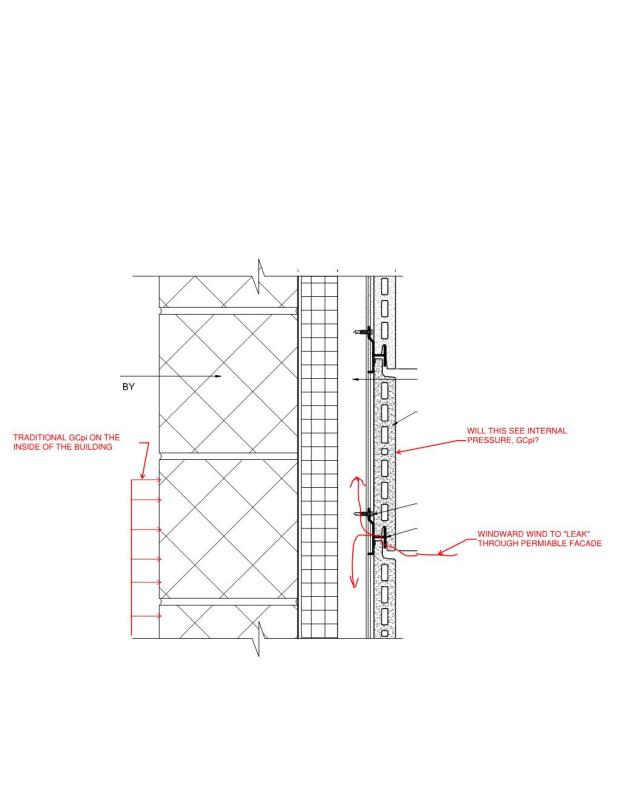sticksandtriangles
Structural
- Apr 7, 2015
- 472
Hello,
I am in charge designing some supports for a facade.
In calcing the C&C wind loads per ASCE 7-05 Method 2, the question arose as to if I should be including +/- 0.18 for internal pressures.
The cladding is permeable so wind can get behind the panels and maybe create pressure behind the panel, but this is definitely not internal pressure.
I think I feel comfortable using +/-0.0 for my internal pressures and just using GCp in my wind load calcs. See below

Let me know if you know any good references on the topic as well.
Thanks against for your opinions in advance.
I am in charge designing some supports for a facade.
In calcing the C&C wind loads per ASCE 7-05 Method 2, the question arose as to if I should be including +/- 0.18 for internal pressures.
The cladding is permeable so wind can get behind the panels and maybe create pressure behind the panel, but this is definitely not internal pressure.
I think I feel comfortable using +/-0.0 for my internal pressures and just using GCp in my wind load calcs. See below

Let me know if you know any good references on the topic as well.
Thanks against for your opinions in advance.
